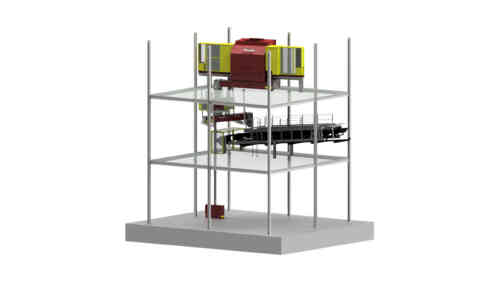Introduction
Sampling Systems are a valuable part of any material processing application even though they are not involved with actual product creation. These electro-mechanical devices can be used to ensure a product meets requirements in as-shipped and as-received situations and to correctly value a product. They can even be used to monitor wear components on upstream equipment by collecting sample material for comparison purposes.
Mechanical Sampling Systems are available with several styles of sampling equipment. There are Cross Belt Samplers, which are placed overtop of conveyor belts and take sample increments of material off the moving belt. There are Falling Stream Samplers, which can have various configurations but all collect samples from a falling material stream. And there are Auger Sampling Systems, which are used to collect samples from rail cars, trucks and other forms of shipping containers.
Sampling Systems can incorporate any of these types of samplers (or some combination of different types) in the design of the system.
Sampling systems can even include lab and pilot plant crushers, which are small-scale versions of Jaw Crushers, Roll Crushers, Impact Crushers, etc. These sampling crushers are designed for low-tonnage applications and lend themselves perfectly for reducing the particle size of samples for further division — both as part of a larger sampling system or for analysis in the lab.
Any of these types of sampling equipment can be used alone or as part of a larger multi-stage system, which involves two or more of these equipment types to collect and process sample increments.

For example, a Cross Belt Sampler could collect a large, primary sample of material from a conveyor belt. This material could then be reduced in size by a sample crusher and sent to another, albeit smaller, Cross Belt Sampler, which takes a sample of the crushed material to send to the lab. Any reject material — material that is not collected as part of the final sample — flows right back into the main production process.
Do I need a multi-stage sampling system?
Not every application will require or even want a Multi-Stage Sampling System. Some applications will be able to meet their sample collection goals with just one piece of equipment.
But other applications may highly benefit from installing a multi-stage system and will see its value in a reduction in manual sample processing required by lab personnel.
Whether your application could benefit from a Multi-Stage Sampling System depends on a variety of factors. Here are four signs you may need or benefit from a Multi-Stage Sampling System in your application.
Read how McLanahan helped a Mexican oil refinery with a Multi-Stage Sampling System.
1. High flow rate of material
Flow rate is a major indicator of if a Multi-Stage Sampling System is necessary for an application. Higher flow rates result in larger sample increments, which mean more material is collected. Adding multiple sampling stages will reduce the amount of sample material that goes to the lab. Reducing the amount of sample material that goes to the lab then reduces the amount of processing lab personnel must do to get the sample to the size they need for analysis.
2. Inconsistent or nonhomogeneous material
Applications that have a variation or inconsistency in the material being processed may benefit from a Multi-Stage Sampling System, as more sample increments will need to be collected to obtain a representative sample, which means more material to be handled. By taking a smaller sample size of the larger sample, a Multi-Stage Sampling System can benefit applications with nonhomogeneous material by reducing the amount of material that needs to be handled at the lab.
3. Large particle size
The larger the particle size of the material, the larger the sample cutter width system that will be required on the Sampling System. A wider cutter will inherently collect a larger amount of sample, which means more material that will have to be processed at the lab. Additionally, larger particle size material tends to require larger sample mass to represent the material at that particle size.
A Multi-Stage Sampling System would provide additional sampling steps to reduce the particle size and amount of sample material that needs to be processed by lab personnel.
4. Wide conveyor
Larger/wider conveyors generally tend to handle higher flow rates and sometimes larger particle size material. The high flow rate tends to result in larger sample increments. The larger particle size material requires the wider cutter and typically a larger sample mass (plus, a crushing requirement).
Again, a Multi-Stage Sampling System can benefit the application by reducing the amount of material that is sent to the lab for processing.
Material plays a large role in determining the value of a Multi-Stage Sampling System for an application. Basically, if you have to collect a lot of samples in order to accurately represent the whole, you’ll end up with a lot of material and could probably benefit from an additional sampling stage or several additional sampling stages.
In short, larger and/or more sample increments equal more sample material collected, which can equate to more sampling stages.
How many stages of sampling and/or crushing required can also be determined by the material size and how much it will need to be reduced down to a size that is manageable for analyzing at the lab. The more online processing you can do ahead of the lab can reduce the amount of processing required at the lab, which can also reduce labor costs and free up personnel for other tasks.
Any reliable mechanical Sampling System manufacturer will ask for as much application information as possible before recommending a Multi-Stage Sampling System. This information can include:
- Material characteristics
- Application goals
- Process requirements
- Equipment involved in the production
- More
If from these details the manufacturer determines a Multi-Stage Sampling System would be beneficial, they will then determine how many stages are needed based on the application goals and data.









